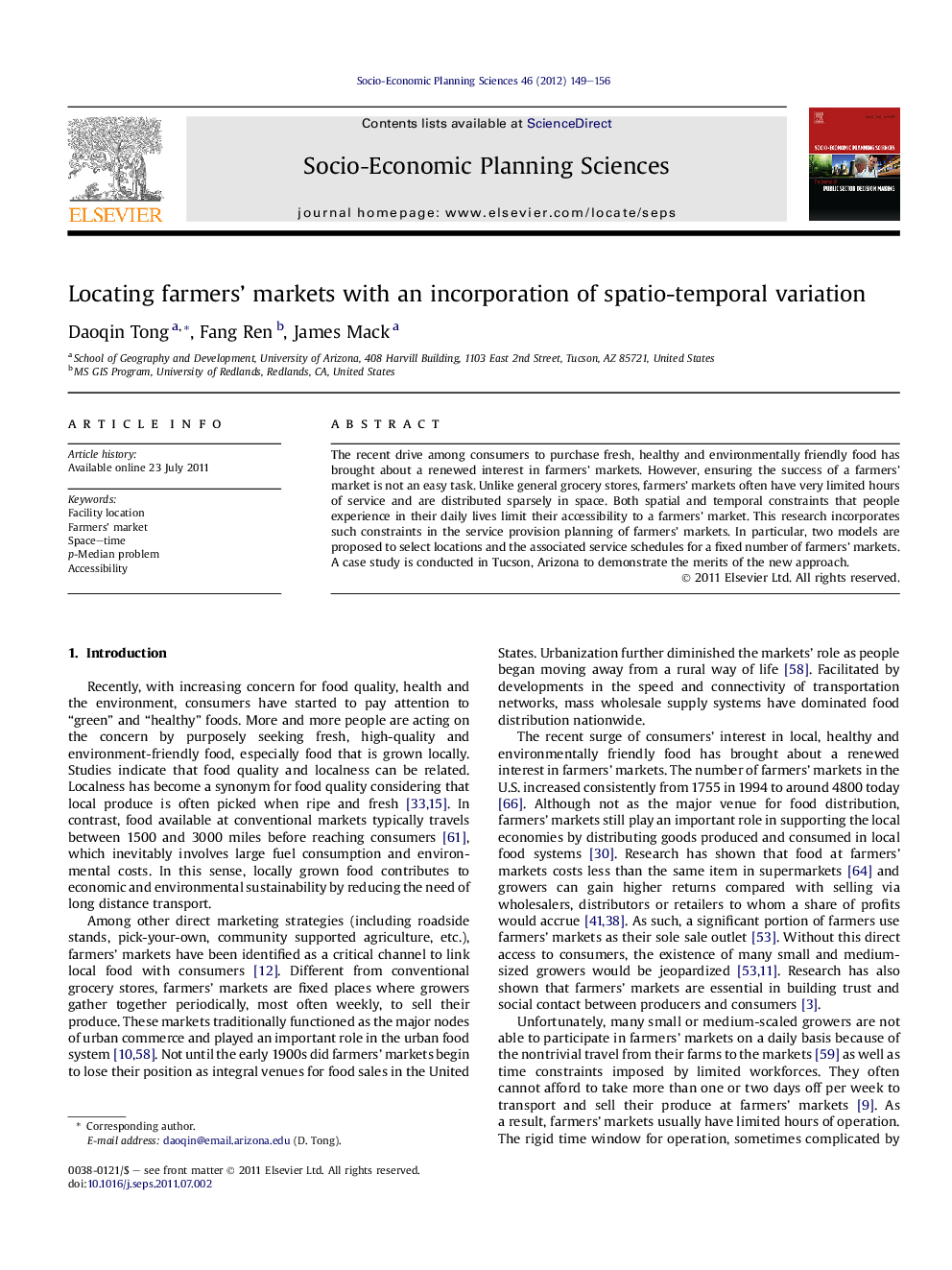| Article ID | Journal | Published Year | Pages | File Type |
|---|---|---|---|---|
| 987247 | Socio-Economic Planning Sciences | 2012 | 8 Pages |
The recent drive among consumers to purchase fresh, healthy and environmentally friendly food has brought about a renewed interest in farmers’ markets. However, ensuring the success of a farmers’ market is not an easy task. Unlike general grocery stores, farmers’ markets often have very limited hours of service and are distributed sparsely in space. Both spatial and temporal constraints that people experience in their daily lives limit their accessibility to a farmers’ market. This research incorporates such constraints in the service provision planning of farmers’ markets. In particular, two models are proposed to select locations and the associated service schedules for a fixed number of farmers’ markets. A case study is conducted in Tucson, Arizona to demonstrate the merits of the new approach.
► We provide models for service provision planning of farmers’ markets. ► We incorporate spatio-temporal variation in modeling accessibility of demand. ► We consider trip-chaining behavior when evaluating accessibility to a facility. ► New models result in less overall travel.
